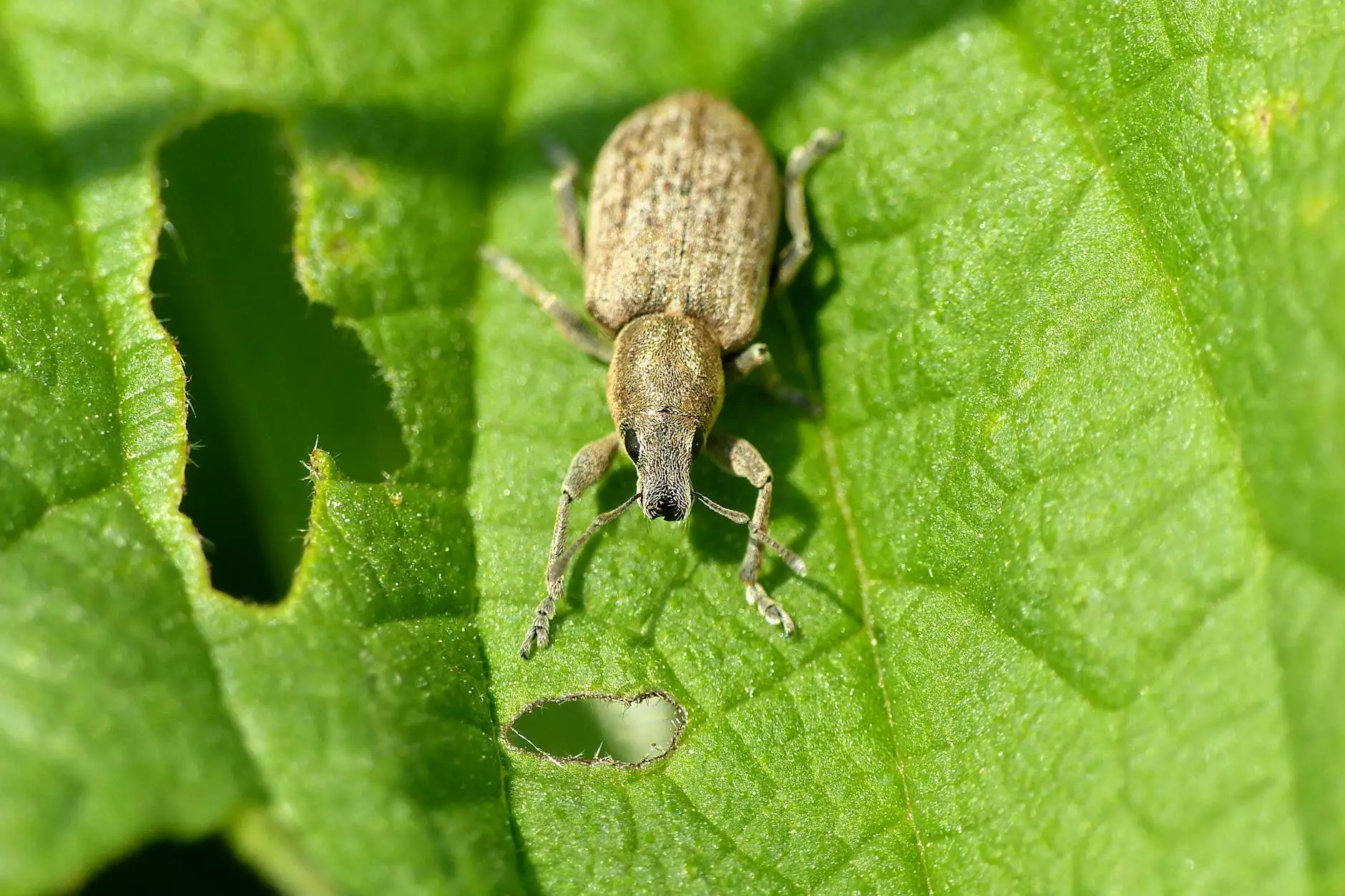Effective Strategies for the Control of Rice Weevil

The rice weevil (Sitophilus oryzae) is a common pest that poses a significant threat to stored grains globally, particularly rice. These tiny insects can cause devastating losses if left unchecked. Understanding the control of rice weevil is essential for farmers and grain storage operators to protect their investments and ensure food security. In this comprehensive article, we will explore various methods and strategies to control rice weevils effectively.
Understanding the Rice Weevil: Biology and Behavior
To effectively control rice weevils, it is crucial to understand their biology and behavior. The rice weevil typically measures about 1/8 inch long and is characterized by its long snout, which is used to drill into grains to lay eggs. Here are some key points about their lifecycle:
- Egg Stage: Female weevils lay approximately 300 eggs, usually inside grains.
- LARVAL STAGE: After hatching, larvae feed on the grain from the inside, causing significant damage.
- Pupal Stage: Once the larvae mature, they pupate inside the grains before emerging as adult weevils.
- Adult Weevils: Adults can live several months, during which they continue to breed and infest stored grains.
Identifying Rice Weevil Infestations
Recognizing early signs of a rice weevil infestation can help prevent extensive damage. Look for the following indicators:
- Visible Damage: Check for holes in grains, which indicate weevil activity.
- Presence of Weevils: Adult weevils can often be found on or around infested grains.
- Powdery Residue: Fine powdery frass (insect waste) can be seen around infested grain storage areas.
Preventive Measures for Control of Rice Weevil
Prevention is always better than cure, especially in pest management. Here are effective preventive measures for the control of rice weevil:
1. Proper Grain Storage
Ensure that grains are stored in clean, dry, and airtight containers. Use bins with tight seals to prevent weevils from entering. Consider these storage practices:
- Inspect storage facilities regularly.
- Maintain low humidity in storage areas.
- Utilize grain cooling methods to deter weevil activity.
2. Regular Inspection and Maintenance
Frequent inspections of stored grains are vital. Check for any signs of infestation and take immediate action if found. Develop a systematic inspection schedule, including:
- Daily visits during peak seasons.
- Thorough checks before new grain storage.
- Monitoring of temperature and humidity levels.
Biological Control Methods
Biological control methods leverage natural predators and parasites to manage pest populations. Here are some approaches to consider:
1. Natural Predators
Some insects, such as the Cryptolaemus montrouzieri, can prey on rice weevils. Introducing these predators into grain storage facilities can help keep weevil populations in check.
2. Parasitic Wasps
Parasitic wasps, like Braconidae, lay their eggs inside weevils, effectively controlling their population. This method requires careful planning and knowledge of local ecosystems.
Chemical Control Methods
In cases of severe infestations, chemical control methods may be necessary. However, they should be used as a last resort and in compliance with local agricultural regulations. Consider the following:
1. Insecticides
Various insecticides are effective against rice weevils. Approved chemical formulations should be applied according to the manufacturer's instructions. Safety precautions must be taken to protect the environment and non-target organisms.
2. Fumigation
Fumigation is a highly effective method for large-scale infestations. This process involves sealing the storage area and releasing fumigants that penetrate the grains, killing any existing weevils. Professional fumigation services are recommended for optimal results.
Integrating Control Strategies
For the most effective control of rice weevil, it is advisable to integrate various strategies. A holistic approach may include:
- Combining biological and chemical methods.
- Implementing preventive measures alongside treatment protocols.
- Training staff on pest identification and monitoring techniques.
Educating Farmers and Grain Managers
Education is a powerful tool in pest management. Training programs for farmers and grain managers can significantly enhance awareness and abilities regarding the control of rice weevil. Key topics should include:
- Identifying weevil infestations.
- Understanding pest biology.
- Implementing integrated pest management (IPM) strategies.
Conclusion
Understanding the control of rice weevil is vital for maintaining the integrity of stored grains. Through a combination of proper storage, preventive measures, biological and chemical control methods, and education, farmers can significantly reduce the risk of infestations. Taking action proactively protects not only the grains but also ensures sustainability in agricultural practices. By adopting these strategies, you can safeguard your harvest and enhance your success in farming.
For further information and personalized support, consider visiting tsgcinc.com for expert advice in farm equipment repair and farming equipment solutions tailored to your needs.



